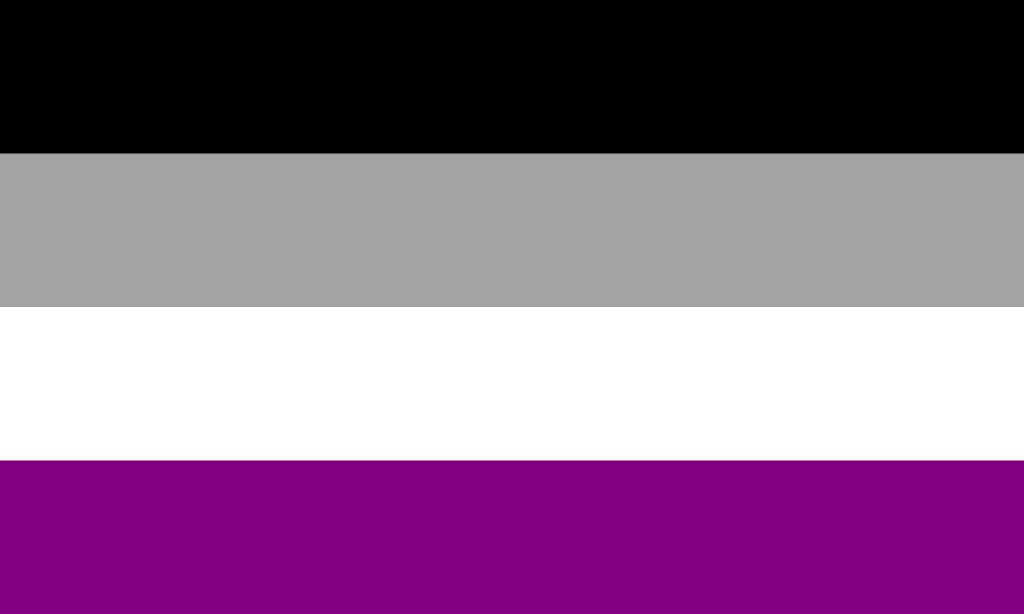History of the Asexual Flag
Because I know too much about this and wanted to share

Recently I did an art history project on aspec art, and a lot of it involved the origins of the flags. And since I’m desperate for aspec content (and also I put too much effort into this paper for only my professor to see), I decided I’ll share my research!
I want to talk about just the asexual flag right now. I’m planning on making something for the aromantic flag as well. As for the other aspec flags, it depends on how much time I have with school and all, but I’m definitely open to making this a series.
So, without further ado, the history of the asexual flag!
The asexual flag was created in 2010 on a forum site called The Asexuality Visibility and Education Network (AVEN). Led by users brikster and standup, a series of three different polls that stretched across multiple platforms was launched. Eventually the most simple design was settled on—four stripes of black, grey, white, and purple. The stripes were chosen because the other pride flags around this time had a similar design, and it was meant as a way of unity with other parts of the queer community.
Like the other pride flags, the colours have specific meanings. Black stands for asexuals, the grey for the asexual spectrum, the white for allosexual partners and allies, and the purple for the community. There has been movement as of lately to change the white stripe’s meaning, but as far as I’m aware nothing has really stuck.
Black, grey, and white were chosen in reference to the Kinsey Scale. According to the results of Kinsey’s test, there was a category for candidates that didn’t experience attraction to any gender (group X). This is where the citation of only one percent of the population is asexual comes from. AVEN’s original logo was an upside down white and black triangle, calling back to the upside down pink triangle that homosexuals had to wear in concentration camps during World War II. AVEN’s triangle represents the scale of heterosexuality to homosexuality, but adding a third point underneath representing asexuality. It was later changed to a white to black gradient to represent the range between asexuality and allosexuality.
The color purple was chosen specifically because of David Jay, the webmaster of AVEN. In the early days of AVEN, Jay wrote a poem titled “Amethyst” about his experience as an asexual, saying, “...the time has come to question all those locks, for you shall go to and retrieve the amethyst / rocks that make sweet the wine, and let you stay sober”. This is a reference to the poem “L’Amethyste” by Rémy Belleau about Dionysus and a woman named Amethyst. Many missight this as a Greek myth: it is not. I spent too much time crying in the library to let this misconception continue any longer.
There’s two versions of this story, but they end up with the same result. In one version, Dionysus decides to attack the next person he sees with tigers because he’s in a state of rage, who just so happens to be Amethyst on her way to worship Artemis. In another version, Amethyst rejects Dionysus’ advances, and the latter is enraged by this. Either way, she gets attacked by tigers and calls for Artemis, and the goddess turns her to stone. Upon realizing what he’s done, Dionysus is filled with regret and pours his wine on Amethyst, turning the stone purple, vowing to never do something like that again. A mutual of mine on Tumblr pointed out that, despite how problematic it is to have a stripe for allos on, it does tie into “L’Amethyste” nicely, as it could be interpreted as allos unlearning allonormativity and amatonormativity, as well as defending the ace community.
Even though this story isn’t a Greek myth, it does tie back to Greek mythology where there are references to lining a cup with amethyst to prevent drunkenness—hence Belleau’s poem.
And there you have it, the history of the ace flag! There’s so many pieces I didn’t know about before starting this project, and I’m truly honoured I got to learn all of this and be able to share it!
About the Creator
Christian Bellmore
they/them
Linktree: https://linktr.ee/wish_ful_thinking
Enjoyed the story? Support the Creator.
Subscribe for free to receive all their stories in your feed. You could also pledge your support or give them a one-off tip, letting them know you appreciate their work.






Comments
There are no comments for this story
Be the first to respond and start the conversation.